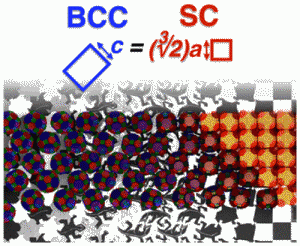 The directed assembly of nanoscale building blocks into complex superstructures is of widespread scientific and technological interest. Scientists and engineers have been intrigued by the prospects of tailoring self-assembly processes to create materials whose properties and function can be tuned through the interaction between constituent particles. In particular, Recent reports of epitaxially connected CQD superlattices with long-range atomic coherence have generated significant interest as a platform for novel, quasi 2D ‘designer materials’. Experimental protocols for the formation of high quality superlattices in which constituent quantum dots are registered to within a single atomic bond length have been established; however, significant gaps persist in our fundamental understanding of several aspects of the underlying mechanism by which these structures form.
The directed assembly of nanoscale building blocks into complex superstructures is of widespread scientific and technological interest. Scientists and engineers have been intrigued by the prospects of tailoring self-assembly processes to create materials whose properties and function can be tuned through the interaction between constituent particles. In particular, Recent reports of epitaxially connected CQD superlattices with long-range atomic coherence have generated significant interest as a platform for novel, quasi 2D ‘designer materials’. Experimental protocols for the formation of high quality superlattices in which constituent quantum dots are registered to within a single atomic bond length have been established; however, significant gaps persist in our fundamental understanding of several aspects of the underlying mechanism by which these structures form.
Astonishingly, the irreversible attachment of proximate particles through mutually exposed ‘sticky {100} facets’ occurs in a manner that enables the formation of structures with atomic coherence with micrometer-sized grains. In the enclosed manuscript, we present a mechanism for this transformation based on a coherent phase transition with distinct nucleation and propagation steps. Specifically, we show that the transformation is nucleated at defects (voids or grain boundaries) in the pre-assembled superlattice.
Kevin’s paper is available here:
J. Phys. Chem. Lett., 2017, 8 (12), pp 2623–2628
DOI: 10.1021/acs.jpclett.7b00846

